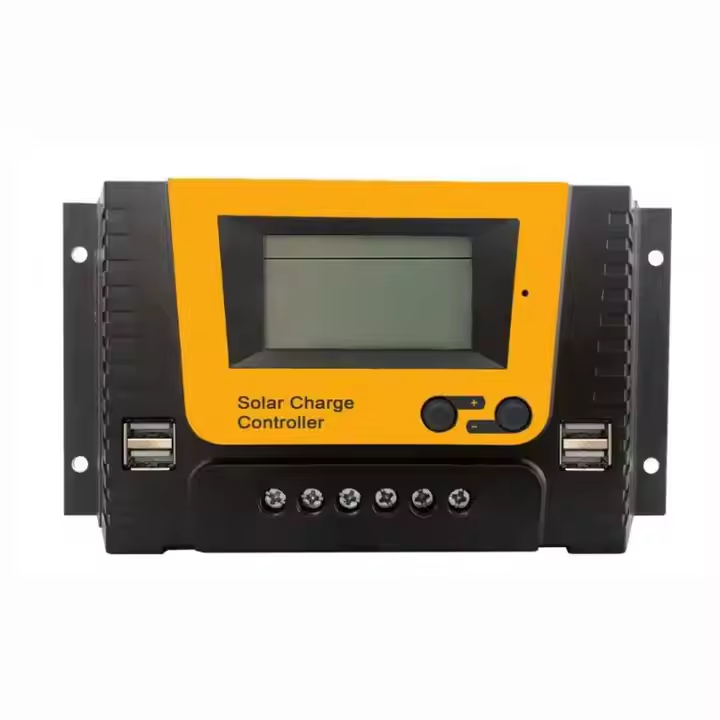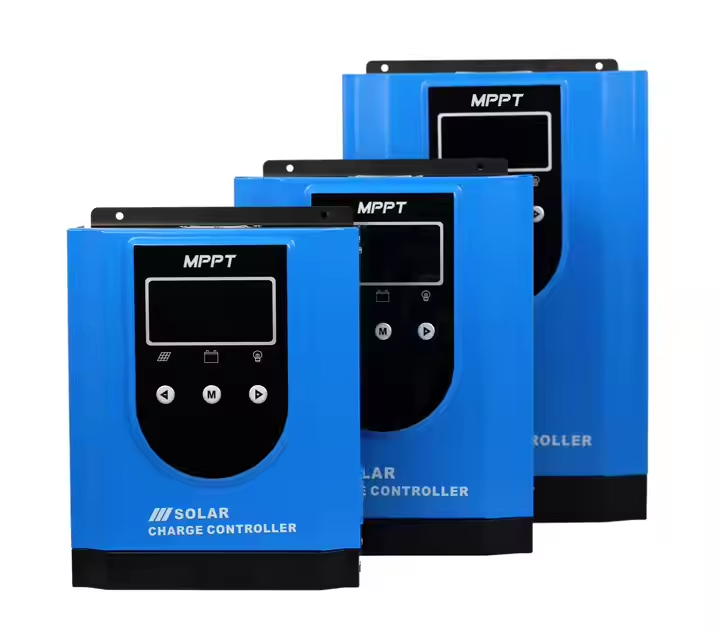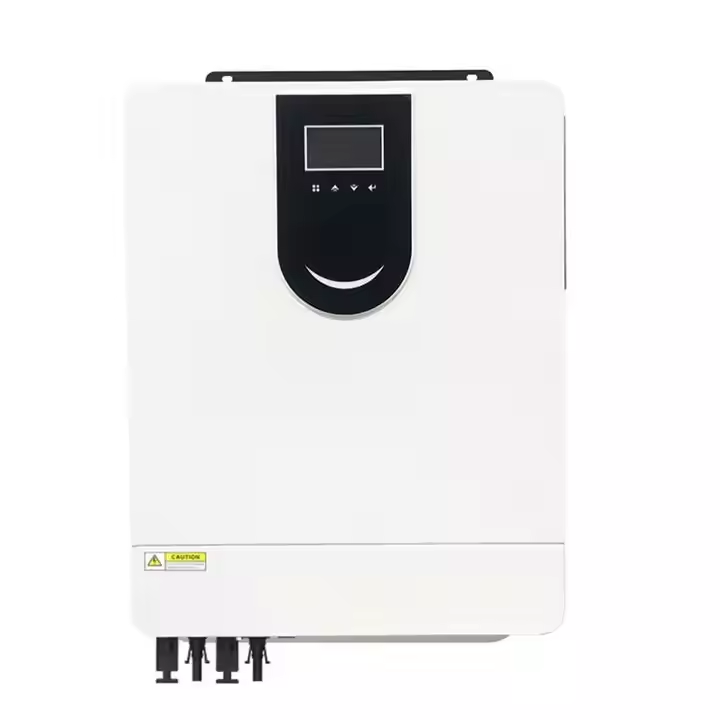I. Introduction
In today’s renewable energy landscape, homeowners are increasingly turning to solar power systems to reduce utility bills, decrease environmental impacts, and gain energy independence. Hybrid solar inverters—devices that combine the functions of traditional inverters with integrated battery management—are a key component in these systems. They not only convert the direct current (DC) from solar panels into usable alternating current (AC) for your home, but also manage energy storage and facilitate smooth transitions between grid-connected and off-grid operation. This comprehensive guide explains the fundamentals of hybrid solar inverters and provides practical advice to optimize energy efficiency and ensure long-term system reliability.
II. Understanding the Components
A. Solar Charge Controllers
Solar charge controllers are the unsung heroes of a solar energy system, regulating the flow of electricity from solar panels to the battery bank to ensure efficient, safe charging.
Key Functions:
Preventing Reverse Current Flow: At night or during low sunlight, controllers disconnect the panels from the battery to prevent energy drain.
Voltage and Current Regulation: They maintain proper voltage and current levels throughout the charging process.
Battery Protection: By monitoring battery levels, controllers prevent overcharging and deep discharge, extending battery lifespan.
Types:
PWM (Pulse Width Modulation) Controllers: Cost-effective and well-suited for smaller, simple systems.
- MPPT (Maximum Power Point Tracking) Controllers: Offer higher efficiency for larger and more complex systems by optimizing the energy drawn from solar panels.
B. Hybrid Inverters
Hybrid inverters merge grid-tied functionality with energy storage management. Their core roles include:
DC to AC Conversion: Converting stored DC electricity into AC power for household appliances.
Energy Management: Supporting both solar generation and battery storage, they ensure a seamless switch between grid-connected and off-grid modes.
Bidirectional Energy Flow: They allow excess energy to be fed back to the grid and provide backup power during outages.
Hybrid inverters offer increased flexibility, improved efficiency, and enhanced energy security over traditional inverters.
III. The Concept of System Integration
A. Why Integration Matters
Integrating solar charge controllers with hybrid inverters creates a unified energy management system that:
Optimizes Energy Flow: Captures, stores, and efficiently converts every watt of solar energy.
Enhances Reliability: Reduces energy losses and stabilizes power supply during fluctuations.
Simplifies Management: Offers centralized monitoring and control, facilitating easier maintenance and troubleshooting.
B. How They Complement Each Other
Solar charge controllers precisely manage battery charging and protection, while hybrid inverters convert and distribute stored energy effectively. Together, they achieve:
Dynamic Energy Balancing: Maximizing energy harvest during the day and delivering stable power at night or during cloudy periods.
Improved System Protection: Utilizing smart protective features to prevent deep battery discharge.
Seamless Power Management: Enabling efficient switching between grid-connected and off-grid modes, thereby ensuring continuous power availability.
IV. Key Considerations for Integration
A. System Compatibility and Specifications
Voltage and Current Matching: Ensure that your solar panels, battery bank, charge controller, and hybrid inverter have compatible specifications to prevent inefficiencies or potential failures.
Capacity Planning: Assess your household’s energy consumption and future needs to select components that can scale with your demands.
B. Communication and Monitoring Features
Integrated Monitoring: Choose devices with built-in displays or remote monitoring capability to track energy production and battery performance in real time.
Data Logging: Maintaining historical data helps identify trends and enables proactive maintenance.
Smart Connectivity: Devices with Wi-Fi or Bluetooth interfaces allow seamless communication and remote management.
C. Configurable Settings
Low Voltage Disconnect (LVD): Adjustable settings prevent deep discharge and protect batteries.
Customizable Parameters: Fine-tuning charging and discharging cycles to match your specific energy usage improves overall system efficiency.
D. Environmental and Durability Considerations
Operating Temperature Range: Components should function reliably in the prevailing climate conditions.
Ingress Protection (IP Rating): A high IP rating protects devices from dust and moisture.
E. Brand Reputation and Support
Warranty and Customer Service: Select well-established brands that offer robust warranties and reliable after-sales support.
User Reviews and Certifications: Industry certifications and positive customer feedback are strong indicators of product quality.
V. Best Practices for Integration
A. Optimal System Design
Modular Layout: Adopt a modular design for easy future upgrades and scalability.
Accurate Sizing: Precisely calculate your energy requirements and choose components that are correctly matched to your system’s capacity.
B. Installation Procedures
Secure Mounting: Install solar panels at the optimal angle and orientation to maximize energy capture.
Proper Wiring and Connections: Ensure all connections between solar panels, the charge controller, hybrid inverter, and battery bank are secure and correctly polarized.
System Integration: Integrate the charge controller with the hybrid inverter, ensuring that battery storage is correctly connected to both.
Testing and Commissioning: Conduct thorough testing to confirm that the system operates as expected, and adjust settings as needed.
C. Maintenance and Troubleshooting
Routine Maintenance: Schedule regular inspections to clean panels, check wiring, and monitor battery voltage.
Troubleshooting: Develop a systematic approach to identifying and resolving common issues such as connection faults or misconfigured settings.
Upgrade Strategy: Regularly review system performance data and consider component upgrades as technology evolves or as your energy needs increase.
VI. Case Studies and Real-World Examples
Example 1: Residential Solar Integration
A residential installation in a high-temperature region integrated an MPPT charge controller with a hybrid inverter, resulting in a 20% increase in daily energy yield. The system maintained a stable AC output even with fluctuating sunlight, thereby extending battery life and enhancing overall reliability.
Example 2: Community Solar Project
In a semi-arid community project, optimizing the Low Voltage Disconnect settings on the solar controller prevented deep battery discharge during extended cloudy periods. The integrated hybrid inverter provided continuous power during peak demand, ensuring that critical services were maintained without interruption.
Lessons Learned
Successful projects emphasize the importance of:
Precise component matching
Regular monitoring and maintenance
Fine-tuning of adjustable settings
Avoid common pitfalls such as undersized wiring or incorrect system configurations to maximize energy efficiency and system durability.
VII. Conclusion
Integrating solar charge controllers with hybrid inverters is a proven strategy to maximize energy efficiency in solar home systems. By ensuring the compatibility of all system components, leveraging smart connectivity for real-time monitoring, and implementing best practices throughout installation and maintenance, homeowners and renewable energy professionals can achieve a highly efficient and reliable energy system. A thoughtful, data-driven integration process is key to achieving sustainable energy solutions and long-term cost savings.
For those committed to advancing their renewable energy installations, embracing an integrated approach is a sound strategy for a secure and energy-efficient future.
VIII. Frequently Asked Questions (FAQs)
What are the main differences between PWM and MPPT charge controllers?
MPPT controllers generally offer higher efficiency and better performance under variable sunlight conditions, while PWM controllers are a cost-effective solution for simpler systems.How do I ensure compatibility between my solar panels, battery bank, charge controller, and hybrid inverter?
Verify that all components share matching voltage and current ratings as detailed in the manufacturers’ specifications. Accurate system design is critical.What maintenance practices help ensure long-term system efficiency?
Regularly inspect wiring, monitor battery voltage, and recalibrate adjustable settings such as Low Voltage Disconnect (LVD) to maintain optimal performance.How does smart connectivity benefit an integrated solar system?
Smart connectivity enables real-time monitoring, remote control, and data logging, making it easier to track system performance and troubleshoot issues promptly.





